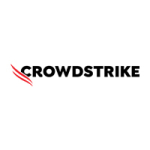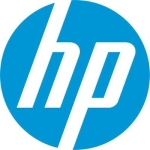What is our primary use case?
I have used Cortex for more than I worked in Cortex. I have around 2.1 years of experience using Cortex XDR, but currently, I am using Cortex.
My main use case for Cortex is to prepare the chart flow of the main Cortex XDR. In Cortex XDR, we have to alert for our auto-triaging and repetitive tasks, and we use it for triage automatically. We use it for CTI Cyber Threat Intelligence enrichment, such as IP, URL, and IOCs, automatically. It also has reputation checks using VirusTotal, abuse.ch, and others for the purpose of the uses in Cortex XDR. It also includes playbook automation. For example, Cortex has many playbooks for phishing, malware, infection, ransomware, and lateral movement. These playbooks automatically conduct the entire investigation and response. In case management, it stores details, timelines, evidence, and others for easier incident tracking. From the SOC perspective, we have to reduce false positive cases, and it reduces duplicate alerts, allowing our SOC analyst to respond faster. On the other hand, for the use of the EDR, Cortex provides detection behavior, attack prevention, and can always identify file-less and memory-based attacks and UEBA normally.
An additional point I need to add in Cortex XDR is manual commands during the investigation, such as Cortex war room commands, IP reputation checks, hash look analysis, and endpoint isolation. These help us to conduct a faster investigation. Additionally, we need to create and modify playbooks according to the organization and the needs of the organization's use cases, for example, auto-disabling a user in case of a suspicious login, auto-quarantining an endpoint with malware, and an auto-phishing and investigation workflow. We use Cortex for reporting to generate incident summary reports, post-incident reviews, and RCA documentation. We integrate it with tools such as SIEM, EDR, firewall, email security, web, and others for alert correlation.
What is most valuable?
The best features of Cortex are automated incident response, playbook automation, cyber threat intelligence, and management. It includes case and incident management, such as incident details, evidence, timelines, and using the dashboard. There is a war room for investigation and to consume alert correlation rules to reduce noise and false positives. It has over 700 integrations. It works with SIEM, EDR, firewall, email security, the cloud environment, and many others. Additionally, it has endpoint detections, behavior analytic UEBA, and machine learning-based detection using ML modules to detect advanced threats. There's a centralized data lake and customized dashboard reports.
I find automation through the playbook to be the most valuable feature I use day-to-day. Playbooks save analyst time. If used for Cortex, it saves the analyst's time with a reduction in false positives. For IOC enrichment, we utilize MTDR, mean time to respond, to resolve incidents faster.
I notice a positive impact since using Cortex. We experience a faster, quicker response. Regarding positive changes, if we have a short positive, we investigate the IP, URL, VirusTotal, and abuse.ch. We use XDR, and it's fast and reliable with no human error. It automatically works to reduce the workload of the SOC analyst, thus decreasing manual work.
What needs improvement?
There are no other improvements Cortex needs in my opinion.
For how long have I used the solution?
I have around 2.1 years of experience using Cortex XDR, but currently, I am using Cortex.
What do I think about the stability of the solution?
Cortex is stable in my experience.
What do I think about the scalability of the solution?
Cortex has good scalability and can handle growth and increased workloads well.
How are customer service and support?
The customer support from Cortex is very good and very useful.
How would you rate customer service and support?
Which solution did I use previously and why did I switch?
I did not use a different solution before.
How was the initial setup?
My experience with pricing, setup cost, and licensing is that it is high, but it is better for the SOC environment and for the users.
What was our ROI?
I notice time saving as a return on investment.
What's my experience with pricing, setup cost, and licensing?
My experience with pricing, setup cost, and licensing is that it is high, but it is better for the SOC environment and for the users.
Which other solutions did I evaluate?
Before choosing Cortex, we looked at different platforms for automation and chose one after reviewing which one was performing higher in the market, apart from Cortex.
What other advice do I have?
My advice for others looking into using Cortex is that it is very easy to use and very useful for the customer environment, whether it's a public or private one. It is extremely helpful from a SOC perspective, requiring very little time to manage situations, especially during integration, which is necessary. Cortex is very useful and cost-effective, in addition to being very easy to use.
My company has a business relationship with the Cortex vendor for business purposes.
I would rate this product a 7 out of 10.
Which deployment model are you using for this solution?
Hybrid Cloud
If public cloud, private cloud, or hybrid cloud, which cloud provider do you use?
Amazon Web Services (AWS)
Disclosure: My company does not have a business relationship with this vendor other than being a customer.























